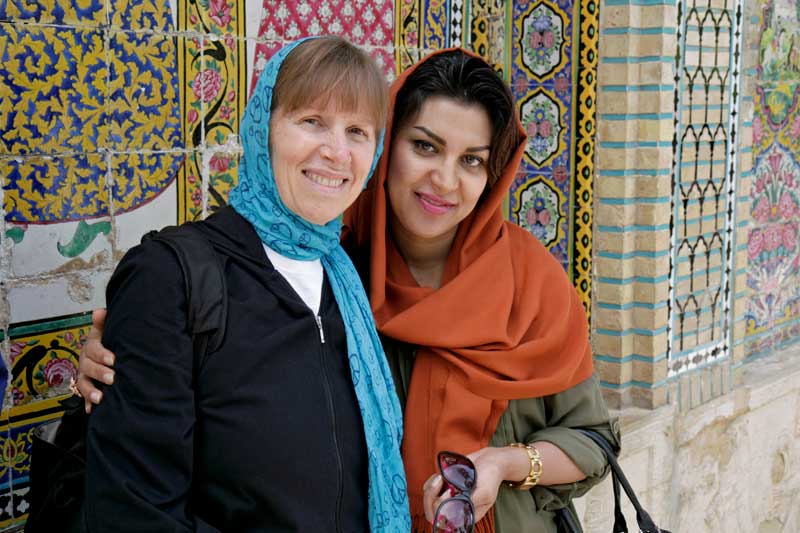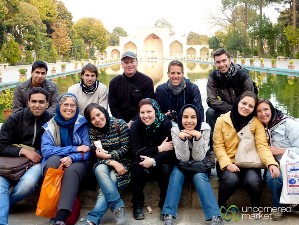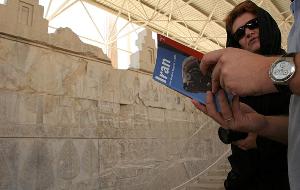Tourism is on the rise in Iran
Tourism is on the rise in Iran
More visitors have explored Iran since last year’s landmark nuclear deal and the lifting of the sanctions.
 |
When the video Do not go to Iran first hit the internet in spring title did some Iranians fear that it would be yet another attempt to sabotage the country’s image.
But it was the opposite. French filmmaker Benjamin MARTINIE said the video aims to clear up misunderstandings about Iran, by counteracting the usual stereotypes through clips from his latest visit. The video has now been viewed hundreds of thousands of times on YouTube and Vimeo, and often divided between Iranians inside the country via social media.
“I would say a lot of people might not know [much] of Iran, outside of those things you hear on the news,” MARTINIE, which specializes in trips videography, told Al Jazeera. “Iran is changing, and tourist potential is really high. The warmth of the people, culture, warmth and the many amazing landscapes are all assets.”
The tourism industry in Iran is experiencing a renaissance these days, after years of stagnation following the 1979 revolution and the war with Iraq in the 1980s.
 |
After the election of President Hassan Rouhani, who is seen as a moderate in 2013, the number of incoming tourists to Iran increased by almost a quarter to 4.8 million, according to the World Tourism Organization. The landmark 2015 nuclear deal between Iran and world powers, along with the lifting of sanctions, has opened the door for more visitors: last year, reported the country’s tourism department 5.2 million tourists, with each spending an average of $ 1,700 during their stay, bringing in a total turnover of more than $ 8 billion.
Iran is home to 19 UNESCO-designated World Heritage Site, more than any other country in the Middle East. From 2500-year-old ruins of Persepolis to the large, historic bazaars of Tabriz and Tehran, there are a variety of cultural options for tourists to embrace.
“Even now, it was difficult for us to get the hotel. It was completely full, mostly in Tehran and Isfahan,” Leo Wong, a tourist from the UK who recently visited the southern city of Shiraz with his wife Sera, told Al Jazeera.
Sera said Iran has been on the couple’s travel radar for close to a decade, but friends and family back home was initially worried about their safety, “Everyone was, like, freaking out,” she said. “Some people the impression of Iran is the terrorists, no alcohol and veils because they do not really understand.”
But Iran is ready for a tourism boom?
According Mojtaba Rahmanian, a founder of Iran Travel Service – a company that offers a variety of tours to Iran – the industry is growing rapidly, and will require significant investment in order to continue.
“We need more five-star hotels and more service of high caliber,” Rahmanian told Al Jazeera.
As part of its 20-year economic plan, Iran has an ambitious target to host 20 million foreign tourists annually by 2025, and is in need of more places to house them.
 |
With exhausted infrastructure is often a problem for the tourism industry, a new element to strengthen tourism ties with Turkey gave the green light for more Turkish investors to build hotels in Tehran, Isfahan, Shiraz, Tabriz and Mashhad. Hotel groups from France and Spain have also invested in Iran in recent years, while Iran has strengthened tourism ties with China through the establishment of tourist offices in Shanghai and Guangzhou, hoping to attract Chinese tourists and investors.
The lifting of sanctions has also enabled Iran to upgrade its aging fleet of passenger aircraft, while airlines like Air France and British Airways have announced that they will resume flights to Tehran.
But Rahmanian says tourists can still face challenges when it comes to booking hotels or buying plane or train tickets in the country. The use of credit cards is still not available in Iran, forcing many tourists to get cash.
Despite these issues, Rahmanian says he has seen an increase in visitors through their own tours.
“Last year, tourists were mostly from Australia and Germany, but we have seen a lot more from places like Italy, Spain and even the United States, too,” he said.
“We also had two Americans come to Iran for their honeymoon” Rahmanian added, noting that the custom turn to include a trip to northern Iran, a trendy mountainous region covered in forest.
